Top Rankings
Moore Elementary School District ranks among the top 20% of public school district in Montana for:
Category
Attribute
Overall Rank
Highest overall rank (Top 10%)
Reading/Language Arts Proficiency
Highest reading/language arts proficiency (Top 5%)
Science Proficiency
Highest science proficiency (Top 20%)
Student Attention
Lowest student:teacher ratio (Top 1%)
For the 2025 school year, there is 1 public middle school serving 15 students in Moore Elementary School District. This district's average middle testing ranking is 5/10, which is in the bottom 50% of public middle schools in Montana.
Public Middle School in Moore Elementary School District have an average math proficiency score of 30% (versus the Montana public middle school average of 33%), and reading proficiency score of 50% (versus the 47% statewide average).
Minority enrollment is 0% of the student body (majority Black and Hispanic), which is less than the Montana public middle school average of 23% (majority American Indian).
Overview
This School District
This State (MT)
# Schools
2 Schools
331 Schools
# Students
47 Students
34,525 Students
# Teachers
7 Teachers
2,568 Teachers
Student : Teacher Ratio
7:1
7:1
District Rank
Moore Elementary School District, which is ranked within the top 50% of all 347 school districts in Montana (based off of combined math and reading proficiency testing data) for the 2021-2022 school year.
Overall District Rank
#26 out of 350 school districts
(Top 10%)
(Top 10%)
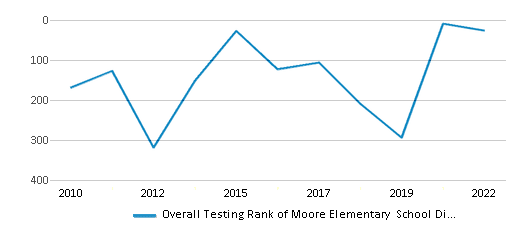
Math Test Scores (% Proficient)
40-59%
35%
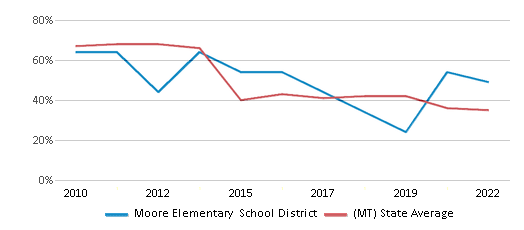
Reading/Language Arts Test Scores (% Proficient)
60-79%
46%
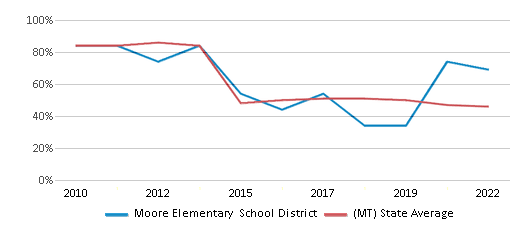
Science Test Scores (% Proficient)
≥50%
37%
Students by Ethnicity:
Diversity Score
0.00
0.39
# American Indian Students
n/a
3,906 Students
% American Indian Students
n/a
11%
# Asian Students
n/a
202 Students
% Asian Students
n/a
1%
# Hispanic Students
n/a
1,953 Students
% Hispanic Students
n/a
6%
# Black Students
n/a
236 Students
% Black Students
n/a
1%
# White Students
47 Students
26,582 Students
% White Students
100%
77%
# Hawaiian Students
n/a
63 Students
% Hawaiian Students
n/a
n/a
# Two or more races Students
n/a
1,583 Students
% of Two or more races Students
n/a
4%
Students by Grade:
# Students in PK Grade:
-
63
# Students in K Grade:
10
440
# Students in 1st Grade:
4
446
# Students in 2nd Grade:
5
428
# Students in 3rd Grade:
2
470
# Students in 4th Grade:
6
567
# Students in 5th Grade:
5
1,752
# Students in 6th Grade:
4
7,409
# Students in 7th Grade:
5
11,480
# Students in 8th Grade:
6
11,296
# Students in 9th Grade:
-
49
# Students in 10th Grade:
-
42
# Students in 11th Grade:
-
41
# Students in 12th Grade:
-
42
# Ungraded Students:
-
-
District Revenue and Spending
Total Revenue
$1 MM
$2,285 MM
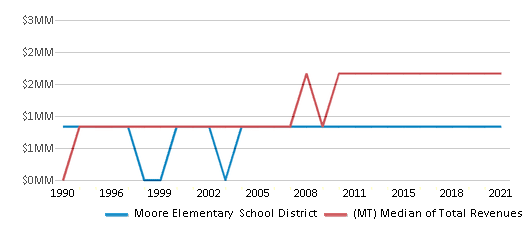
Spending
$1 MM
$2,298 MM
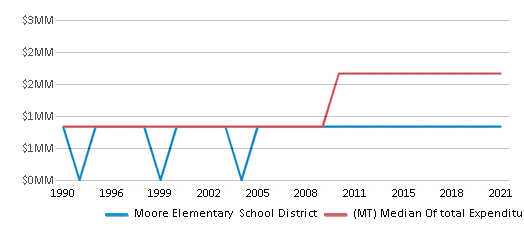
Revenue / Student (19-20)
$17,569
$17,118
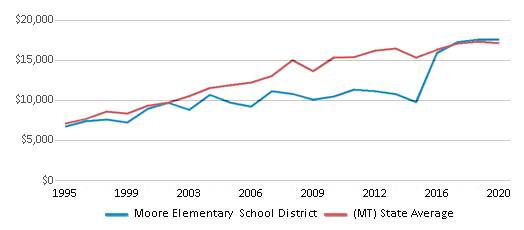
Spending / Student (19-20)
$16,069
$16,545
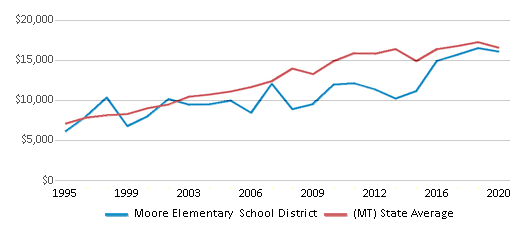
Best Moore Elementary School District Public Middle Schools (2025)
School
(Math and Reading Proficiency)
(Math and Reading Proficiency)
Location
Grades
Students
Rank: #11.
Moore 6-8
(Math: 21-39% | Reading: 40-59%)
Rank:
Rank:
5/
Bottom 50%10
509 Highland Ave
Moore, MT 59464
(406) 374-2231
Moore, MT 59464
(406) 374-2231
Grades: 6-8
| 15 students
Recent Articles

Sexual Harassment at Age 6: The Tale of a First Grade Suspension
A six-year old in Aurora, Colorado, was suspended after singing an LMFAO song to a little girl in his class and reportedly “shaking his booty.” We look at the case and the sexual harassment problem in public schools today.

How Scaffolding Could Change the Way Your Child Learns
This article explores the concept of instructional scaffolding, a teaching method that enhances learning by breaking down complex tasks into manageable parts. It highlights how scaffolding supports students in developing critical thinking skills and becoming more independent learners. The article discusses the benefits of scaffolding, including improved engagement and reduced anxiety, and provides strategies for its implementation across various educational levels.

February 05, 2025
Understanding the U.S. Department of Education: Structure, Impact, and EvolutionWe explore how the Department of Education shapes American education, from its cabinet-level leadership to its impact on millions of students, written for general audiences seeking clarity on this vital institution.





